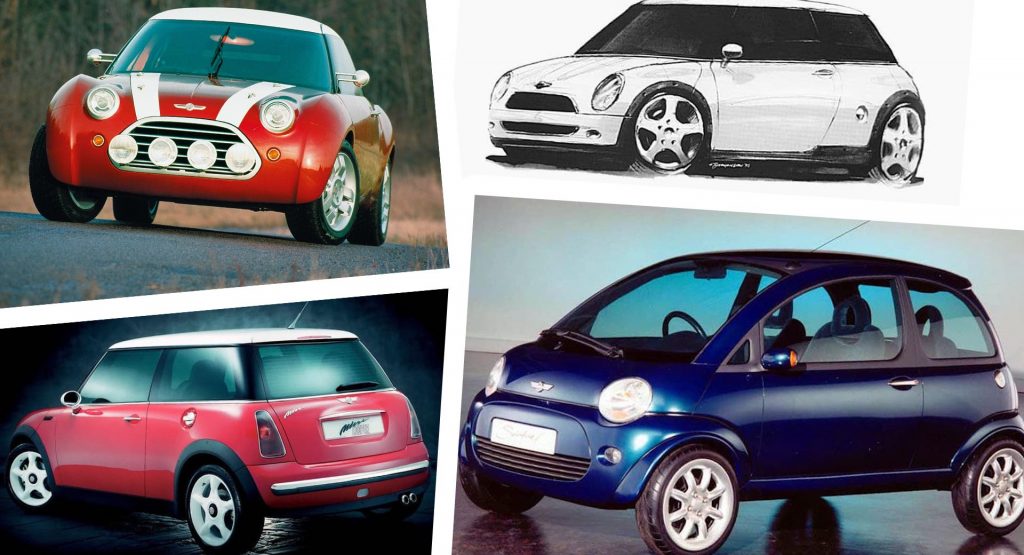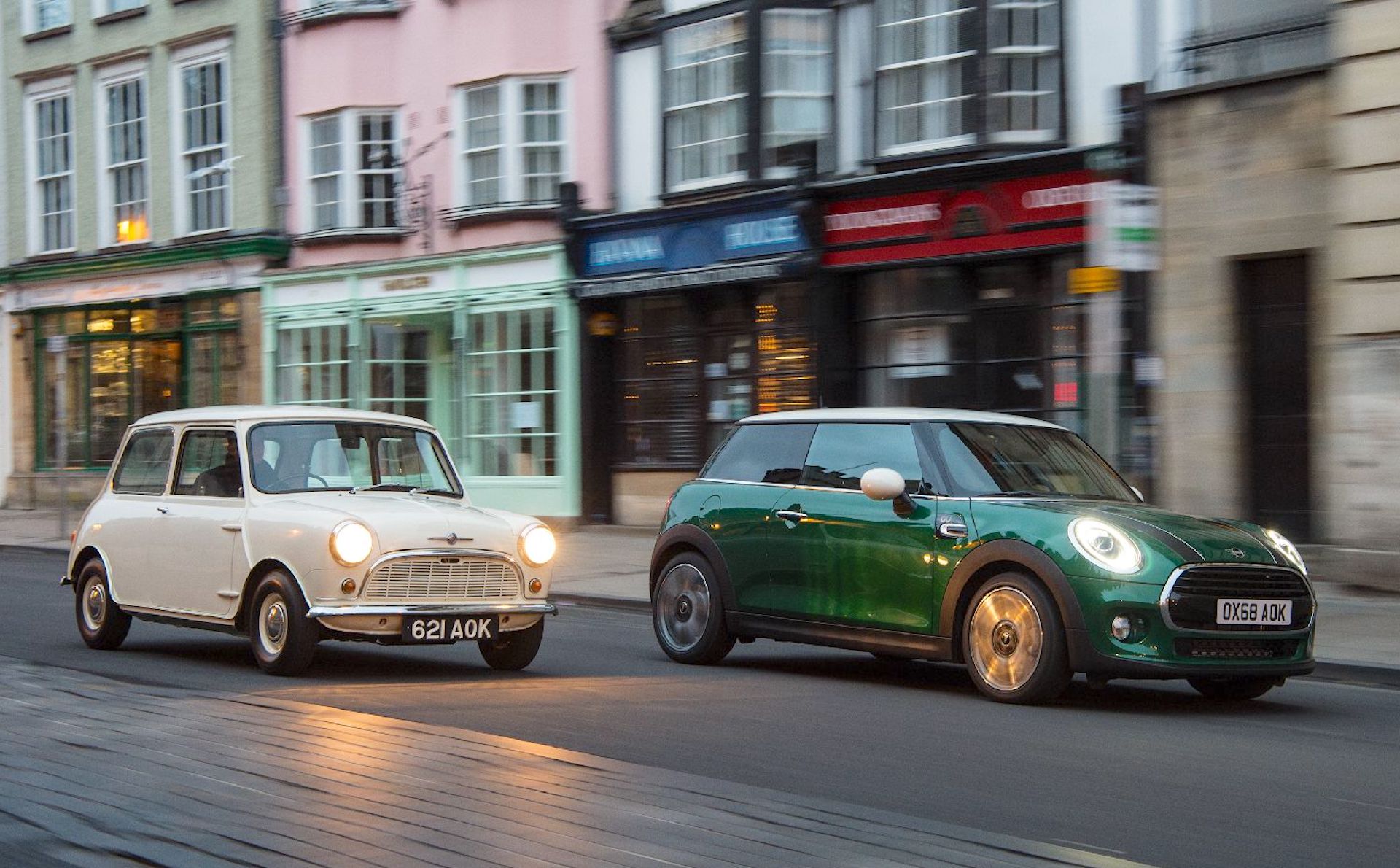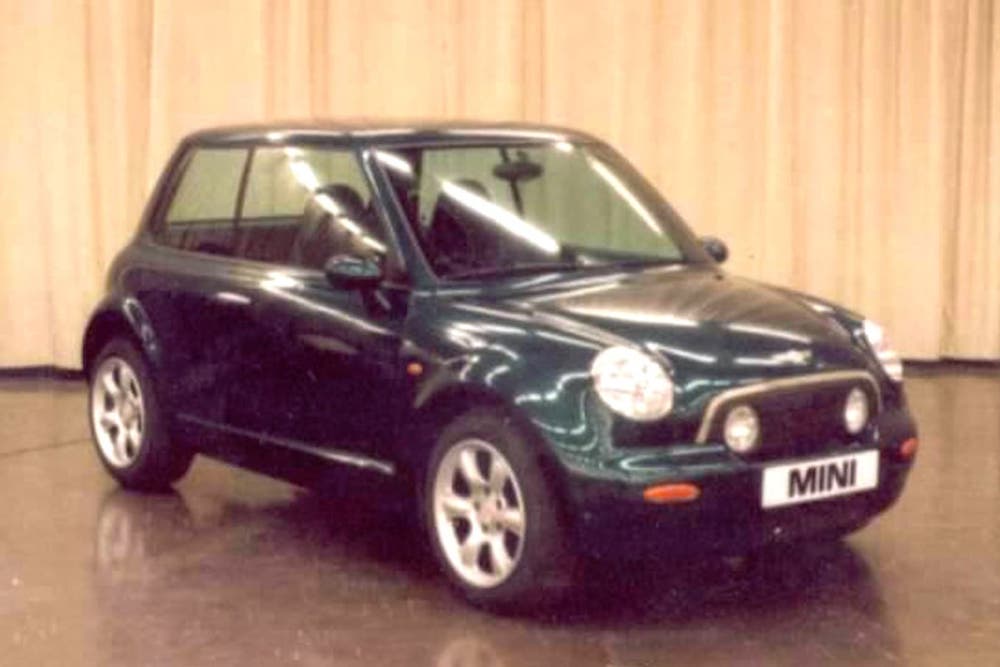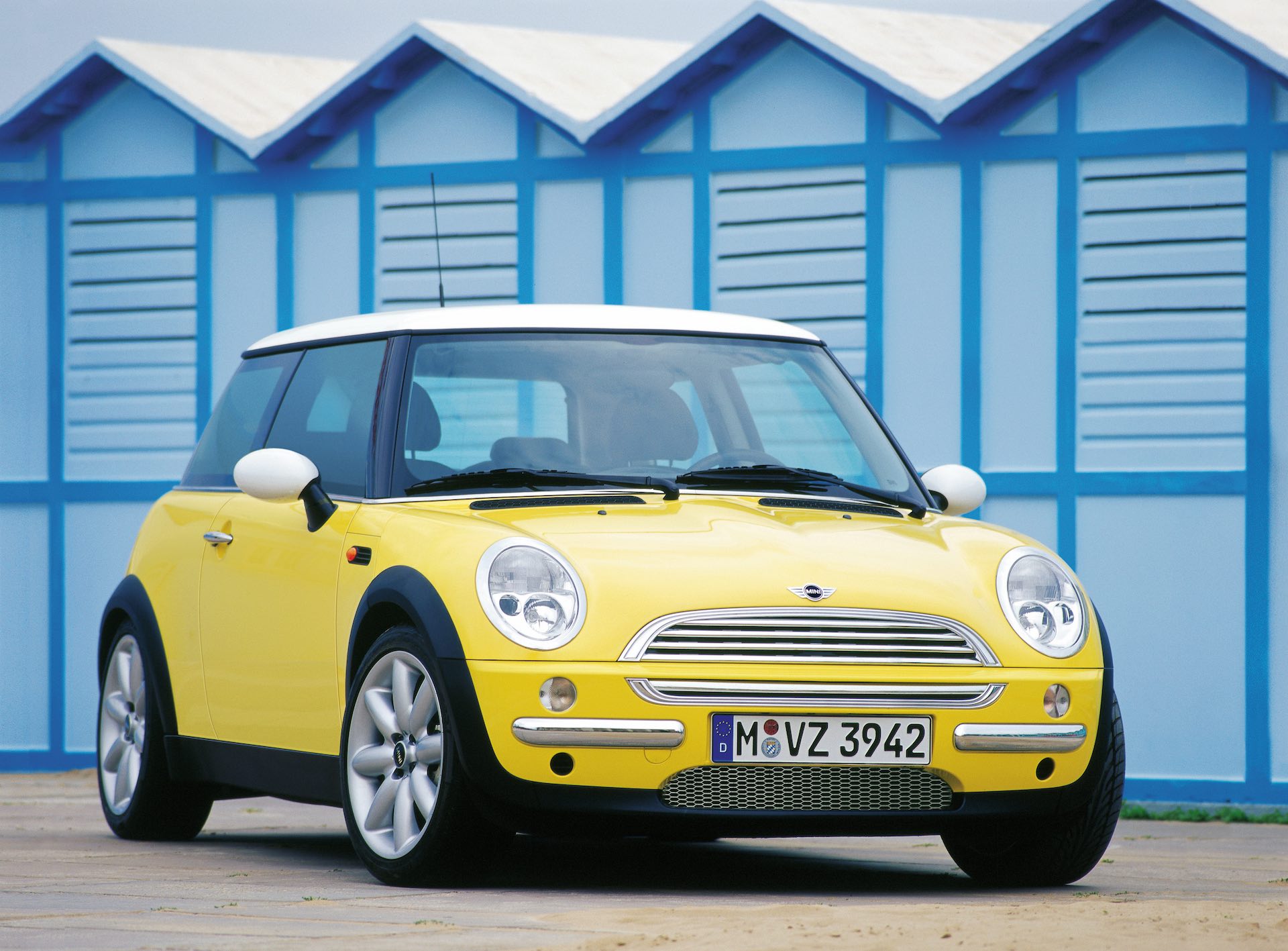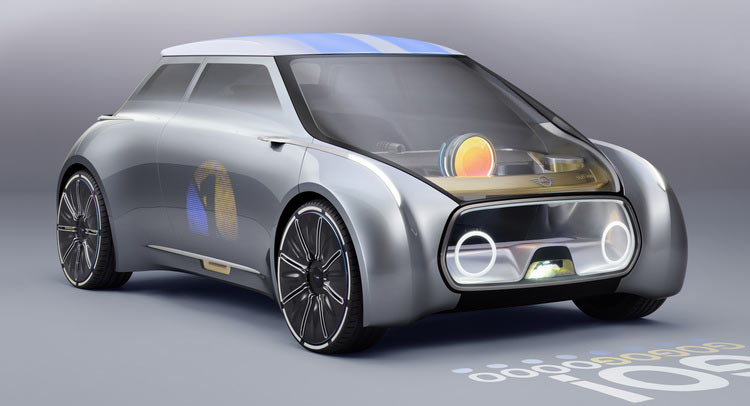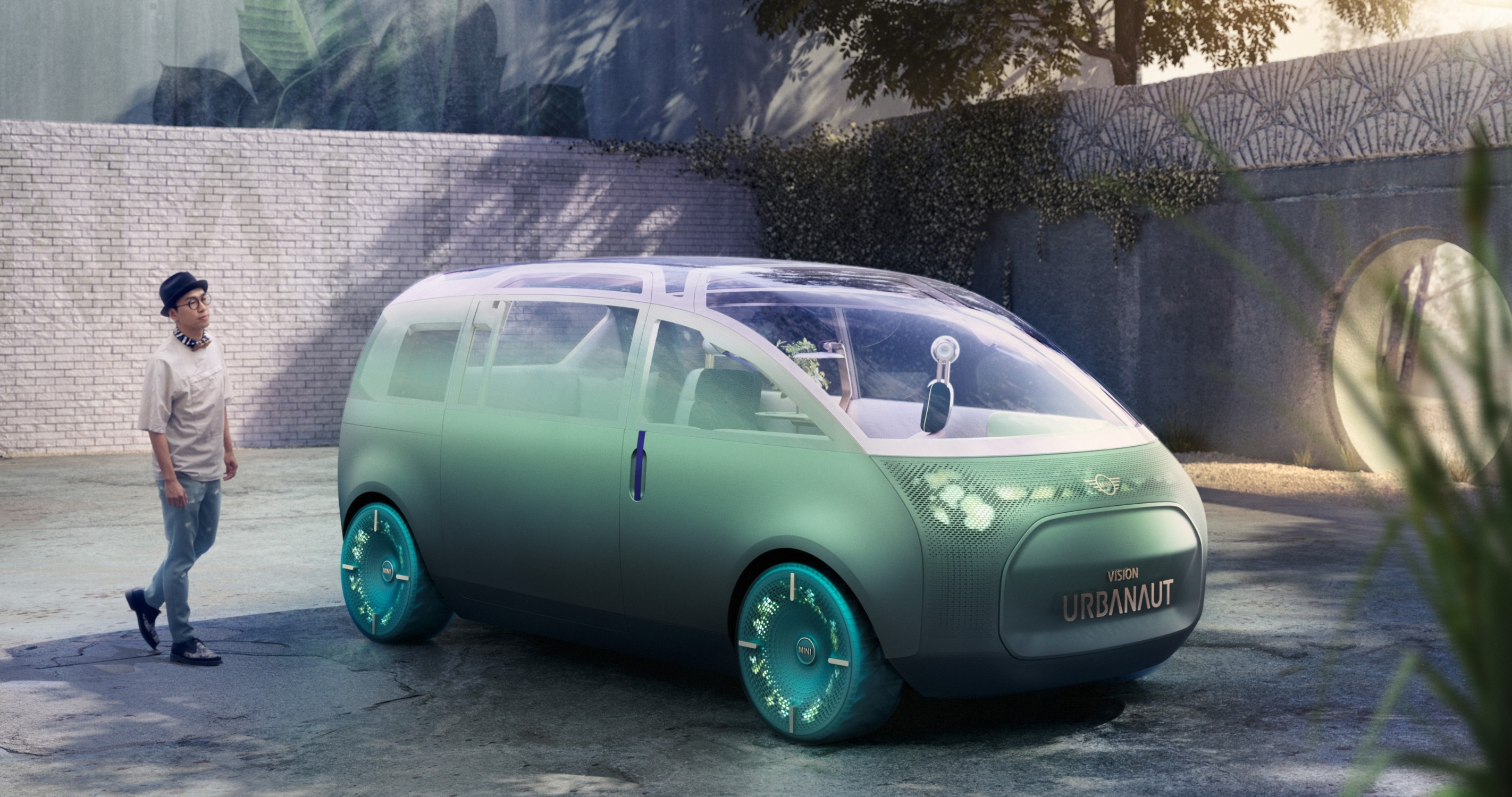This week marks the 20th anniversary of BMW’s Mini. Since the first hatchback rolled off the line in late April 2001, the Mini family has grown to include SUVs, small wagons, a five-door hatch and even a short-lived sporty crossover coupe. They’ve all had the same recognizable Mini face – but it was nearly a very different story.
Before any new car gets the green light for production, it has to face off against a bunch of competing designs. But in the Mini’s case that whole process was made more complicated by the strained relationship between Britain’s Rover Group, maker of the iconic original Mini, and BMW, which bought Rover in 1994.
It’s a fascinating story, made even more so by the fact that Bernd Pischetrsider, who was recently named Daimler’s CEO, but back in the 1990s was the CEO of BM, and the driving forced behind the German company’s purchase of Rover, was a cousin of Alec Issigonis, the designer of the original ’59 Mini.
Related: BMW To Turn MINI Into Their First All-Electric Car Brand By Early 2030s
If you want a proper blow-by-blow account from the people who were there, we’d definitely recommend heading over to AROnline, an incredible resource for fans of old British tin. Still here? Let’s look at the run up to the Mini’s 2001 rebirth.
The Original Mini
BMC, as it was then called, launched the Mini in 1959 as a more car-like alternative to freaks like the Isetta and Heinkel Trojan that had become popular in the wake of the 1956 Suez crisis. It was a genius piece of engineering, offering room for four people and bit of luggage in a 10ft space thanks to its transverse front-wheel drive layout and compact rubber cone suspension.
But by the early 1970s, modern supermini hatchbacks like the Fiat 127 pictured above had moved the game on, and by the 1990s, the Mini was essentially an oldies act: still fun to drive, but hopelessly outclassed in almost every other sense. Clearly a replacement was needed, but should it be a thoroughly modern small car, a machine as bold and forward thinking as the original had been in 1959? Or should it instead concentrate on tapping into buyers’ fondness for and familiarity with that original?
It seems that Rover’s design team, which began investigating the idea of a new Mini in 1993, favored the forward-looking approach. BMW, meanwhile, joining in a year later, better understood the value of having something that evoked a nostalgic feeling for the outgoing Mini, and worked on its own proposals – initially, behind Rover’s back. We all know which direction won out, but here’s what happened along the way.
Mini Spiritual
With its Minilite-style wheels squashed into each corner and its bug-eye lights, the Rover-designed Spiritual concept wanted to introduce a new Mini that was no pastiche of the original. The Spiritual rode on Hydragas suspension and was fitted with a Rover K-series engine mounted under the floor and driving the rear wheels.
In fact there were two cars: the Spiritual Mini and a larger, four-door Spiritual Too. They were revealed at the 1997 Geneva Auto Show, but according to AROnline, had already been kicked out of the running at an infamous design face-off at the British Motor Heritage Center in 1995 where the future of the Mini was decided. BMW’s view was that the Spiritual twins were simply 10-15 years ahead of their time.
ACV30
Another, very different Mini concept had appeared a couple of months earlier in 1997, this one to commemorate the 30th anniversary of the original Mini’s third and final Monte Carlo rally win. The Anniversary Concept Vehicle was built around a contemporary MGF chassis using another design that had been unsuccessful in the 1995 Gaydon shootout. But some of the styling ideas, in particular the interior design, did go on to influence the 2001 car, and pushing the car into the public gaze helped get people used to the idea that a new Mini was on the way, even if this wasn’t it.
Evolution Concept
So if the Spiritual, the car that inspired the ACV30, and several other concepts didn’t make the cut at the Gaydon summit, how did BMW and Rover arrive at the finished design? According to AROnline, two cars did get the nod at the 1995 meeting. One, by Rover’s David Saddington, was a practical four-seat hatchback with recognizable Mini styling details including the lights and grille, and powered by a front-mounted K-series engine.
The German Mini
The second successful proposal came from BMW’s design team in Munich. A smaller, less practical, but sportier car, it was the work of Frank Stephenson, who had already worked on the BMW X5 and would go on to design cars for Ferrari and McLaren. For a time the two designs evolved side-by-side, until it was decided to combine the aesthetics of Stephenson’s 2+2 design with a bit more of the practicality of Saddington’s.
The Winning Design
Having warmed people up to the prospect of a new Mini with the ACV30 and Spiritual concepts, BMW finally gave them a look at the real thing at the Frankfurt Auto Show in September 1997. Or at least it did a good impression of looking like the real thing. Visually it was almost a dead ringer for the car that would hit showrooms in 2001, but that was more than three years away, so the show car was actually a rebodied Fiat Punto.
2001: The Start Of Something Big
When the first Mini finally rolled off the Oxford production line in April 2001, all the hassle involved in getting to that point suddenly seemed worthwhile. Or, that’s how it must have seemed to BMW. Unfortunately for Rover, whose engineers had worked so hard to get the Mini to production, there was little to celebrate.
BMW’s tenure of Rover hadn’t come cheap and it happily offloaded the Rover Group to the questionable Phoenix Consortium for the princely sum of £10 ($7). BMW even gave the venture capitalist group a $695 million (£500m) dowry, though it still managed to run the company into the ground five years later. But the new Mini wasn’t part of the deal. BMW kept that for itself. Which, 20 years and more than 10 millions cars later, turned out to be very smart move.
2006: Even newer Mini
Five years after the Mini’s rebirth, and following a much less painful development process, BMW revealed a second-generation new Mini. What looked like a facelift was actually a brand new car. Interior quality took a dive, but the under-hood hardware was improved by junking the 1.6-liter Chrysler engines for smoother more efficient units developed with BMW, while the Cooper S swapped a supercharger for a turbocharger.
And instead of there being just three-door hatch and convertible Minis, there was an entire family of cars, including a wagon, SUV, two-seat coupe, and a sporty two-door crossover called the Paceman.
2013: New Mini Mk3
The Mini grew in every direction for its third incarnation. Except, that is, under the bonnet, where the non-S cars dropped to three-cylinder power, adopting BMW’s 1.5-liter B28. The slow-selling coupe wasn’t renewed, but the Clubman grew into a more useful machine, and now there was a five-door option for the hatch. Shame it looked terrible.
Mini: The Future
What does the future have in store for the Mini? The relentless rise of the crossover and declining sales for Mini’s traditional hatch, particularly in the US, means we can expect SUVs to feature heavily in Mini’s future. And there will be more electric options beyond the current Countryman PHEV and Mini SE EV hatch. Mini plans to be selling only EVs by 2030.
Rocketman Resurrected
Mini showed the shrunken Rocketman concept in 2011, though plans to put into production fell through when talks with potential partner PSA collapsed. But BMW is believed to have resurrected the city car concept as a replacement for the next Mini hatch. The new three-door will be built as an EV in conjunction with China’s Great Wall Motors, while the UK Oxford plant will produce a conventional gasoline-powered version.
As for how it will look, it’s possible the 2023 Mini might take cues from 2016’s radical Mini Vision Next 100. The partially transparent concept wrapped advanced connectivity and autonomous tech in a body that moved away from the retro style of every other Mini built since 2001.
The Countryman will grow into a much larger SUV, and that will leave room below it for a new fully electric crossover. And if we read anything into the 2020 Vision Urbanaut concept, an electric people mover/minivan along the lines of Volkswagen’s ID. Buzz, it’s possible there are more maxi Minis to come.
Want to read more about the development of the 2001 Mini? Check out AROnline to hear Frank Stephenson’s recollections of the Mini design process.




